48 Hours in Mostar
September 29th-October 1st, 2019
I arrived in Mostar after a long bus ride from Dubrovnik. It was the perfect destination after the hordes of people in Dubrovnik.
The first thing you should know about Bosnia and Herzegovina is that you can’t just call it “Bosnia.” When you’re in Mostar you’re actually in the region of Herzegovina.
Majda’s House
My hostel in Mostar was called Majdas House, and it came highly recommended from people I met in Montenegro. It’s run by Majda, a hilarious, quick-witted woman who cooks a really nice breakfast for all of her guests. I learned that she was actually closing up the hostel on 10/1, so I would be closing down the hostel for the season.
Majda was displaced during the war and moved to the UK for a little while. She described what it was like to live in London working as cleaner and not be able to speak English. What struck out was the way she talked about how no one was able to really know her, and how isolating that was. Her sense of humor was so apparent when I first met her it was sad to think that people weren’t able to see that because of the language barrier.
These days Majda runs a hostel that is consistently rated as the best in Bosnia & Herzegovina, so she’s doing very well. I was glad that she was shutting down for the season for her sake, as she was clearly such a tireless worker.
My first day in Mostar I learned that some people from the hostel were heading to the nearby town of Blagaj. This place is included in most tours of Mostar, but is actually super easy (and cheap) to get to on its own. I packed some ajvar (A paste made from red peppers) and somun (Bosnian Pita Bread) from a local market and hopped on the bus with my new hostel friends.
Blagaj Dervish House
When we arrived in Blagaj the first thing that stuck out at us was the Dervish House next to a beautiful cave. For a couple euros you could have a man row you inside of the caves. The color of the water was incredible. The old man rowing the boat didn’t speak much English but told us that I was due to the Cobalt in the water. Inside the cave there were what looked to be hundreds of pigeons. The shrieking from their babies could almost be mistaken for bats. The man drank from the water and indicated that it was completely safe to drink. Fresh off a course of antibiotics, I was not willing to chance it with this water underneath so many live birds. The reason the water is drinkable is because it comes from a spring called “Vrelo Bune,” and is the source for the Buna River.
The Dervish House is a functioning tekke (monastery) that dates back nearly 600 years. These were the Dervish of Whirling Dervish fame. We paid a few marks to get in. The view from the tekke must be pretty amazing for all those who study there. I borrowed a sarong-like thing to wrap myself in when I entered. I probably would have been ok, but my shorts went a little bit above the knees.
Blagaj Fort
After exploring the Dervish Hosue we continued up the hill Blagaj Fortress. It was a hot walk that took about 45 minutes. The remarkable thing about Blagaj Fortress was that it was completely abandoned. It’s a free activity because there’s literally no one there to take your ticket. Its origins go back to the 4th Century. The position of the fortress on a hill had military significance during its many centuries as a functioning fort, but today, it means it has incredible views.
When we first arrived at the fortress there was not a single other person there. We fully scoped out the space, and I sat to have a little picnic in the shade of one of the crumbling walls. As we were leaving we chatted to a couple visiting from Colorado, and they drove us back to Mostar, which was amazing.
After relaxing for a little bit, we went out to go on Sheva’s free walking tour of Mostar. Sheva is a bit of a renaissance man. He served in the military during the war, worked as a carpenter, and now he does excellent free tours of Mostar. He approached extremely delicate discussions with complete openness while readily sharing his point-of-view.
it was incredibly eye opening to learn about the siege in Mostar and the shifting alliances during the war. Mostar has not been able to heal and today is incredibly segregated. One side of the city are the Bosniaks, and the other side are Bosnian Croats. Sheva told us that if you call for an ambulance, they ask you where you live to make sure they take you to the “correct” hospital. That means that if you were a Bosniak and had a heart attack across the street from the Croat hospital, they would take to the Bosniak hospital. Things most people take for granted as being handled by their city like electricity, water, gas, cable, and even street cleaning all have two separate companies to serve these two populations.
Mostar Bridge
The Mostar Bridge is the most iconic symbol of Mostar and dates back to the 16th Century. It was destroyed by Croat forces in 1993 and rebuilt in 2004. These days there’s little evidence of the war in the old town. UNESCO required that its reconstruction hew closely to its original look. Every day people brave the 24m (78ft) jump into the Neretva river below the bridge. It’s somewhat of a rite of passage for local men and there is a diving competition every year. Tourists make the jump and it’s said that 80% of the tourists who jump are Australians, which can be attributed to a couple of Australian comedians who filmed themselves making the jump for a reality TV program back in Australia.
In order to make the jump you need to get certified by the local diving association. They take you to a nearby location for practice jump and teach you the technique for making the jump. You’re meant to hold your arms out at your sides and bend your knees, which serves the dual purpose of slowing you and allowing you to correct your body’s positioning as you fall. At the very last instance you straighten your body like a pencil. A common mistake men make is not adequately protecting their private parts. Ouch.
I considered making the jump, but it carries a lot of risk. The process of certification is around €40 and I didn’t really have enough time without staying an extra night in Mostar. The last thing I needed was to injure myself 6 months into a 2-year+ trip.
Sniper Tower
The Sniper Tower in Mostar used to be a bank before its size made it an ideal location for snipers. From this spot snipers perched and fired on men, women, and children. Even people waiting in bread lines for food were fair game.
Today, the building’s windows are entirely blown out and the structure is fenced off from the outside. There’s an opening in the back where visitors can sneak in. While it’s not illegal to visit the site, it’s fenced off for a reason. A few years ago, a teen fell to his death while exploring the building.
Right before I was scheduled to take my train to Sarajevo, I visited the tower. I climbed through the hole in the fencing in the back as I had been instructed by other people who had previously visited. I wasn’t expecting for it to be so close to apartment buildings where people still live. A woman stared at me from her kitchen as she made herself tea.
The inside and outside of the building were covered with murals and graffiti. There was some trash on the floor, but not as much as you think. It seemed like a place young people might come to party. A lot of the graffiti had inspirational or political messages.
The elevator wasn’t functioning, of course. In fact, all that was left of the elevators were empty elevator shafts. Looking down into the elevator shaft is not for the faint of heart. All around the building there were plants sprouting out of the concrete. As Jeff Goldblum would say, life finds a way.
As I circled each floor, peering into what used to be bathrooms, the whole thing felt spooky. Coming at night would be terrifying. One wrong step and it’s over. That’s not to mention the rumors of a man in a bikini who flutters about the building at night. When I got to the last set of stairs, I spotted a ladder to the very top. It was a spectacular view of the city, and it made sense as a location of strategic value.
The train to Sarajevo was surprisingly nice. The trains were clean and modern, and the few out the window showcased Bosnia and Herzegovina’s natural beauty.



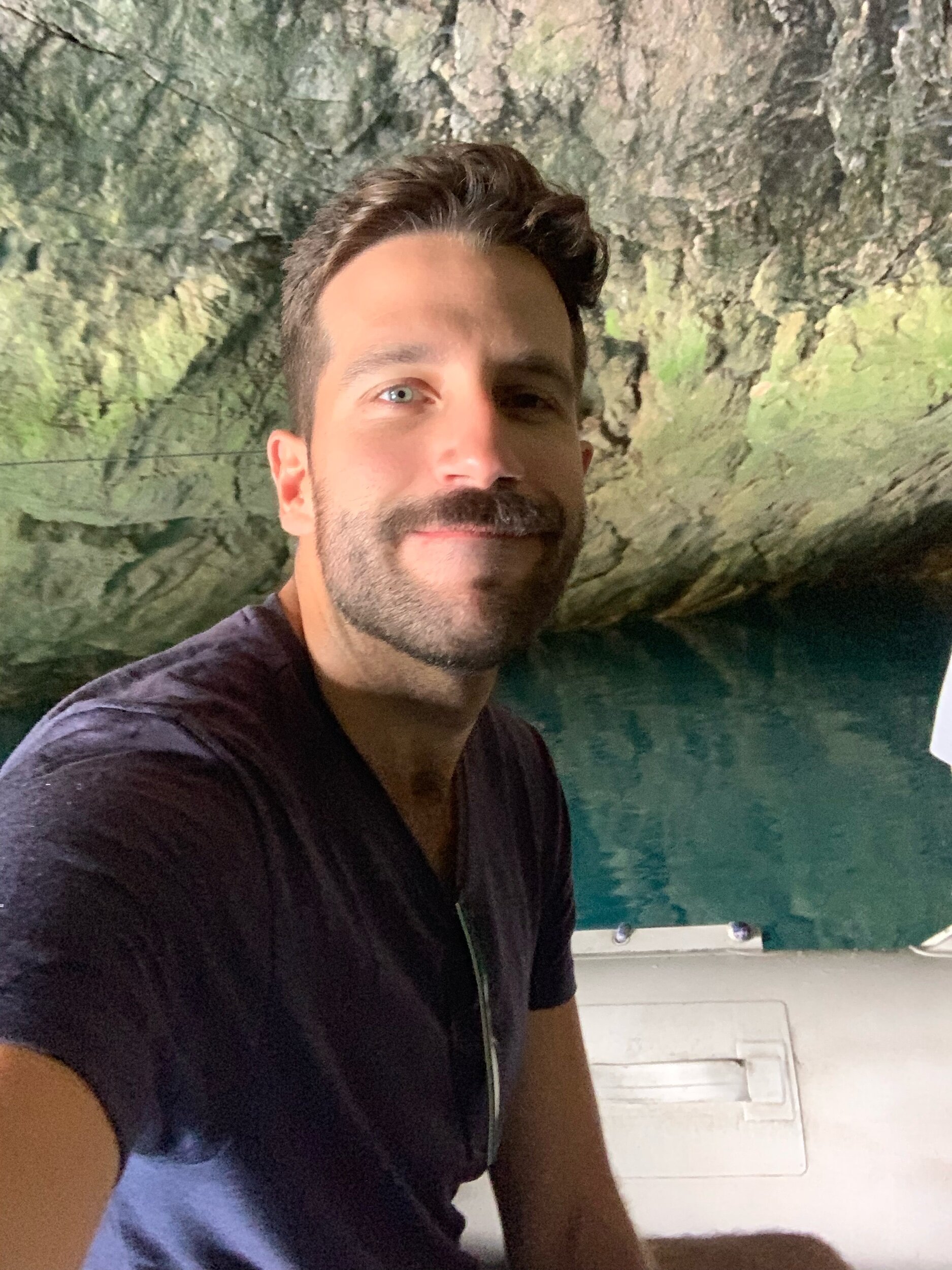

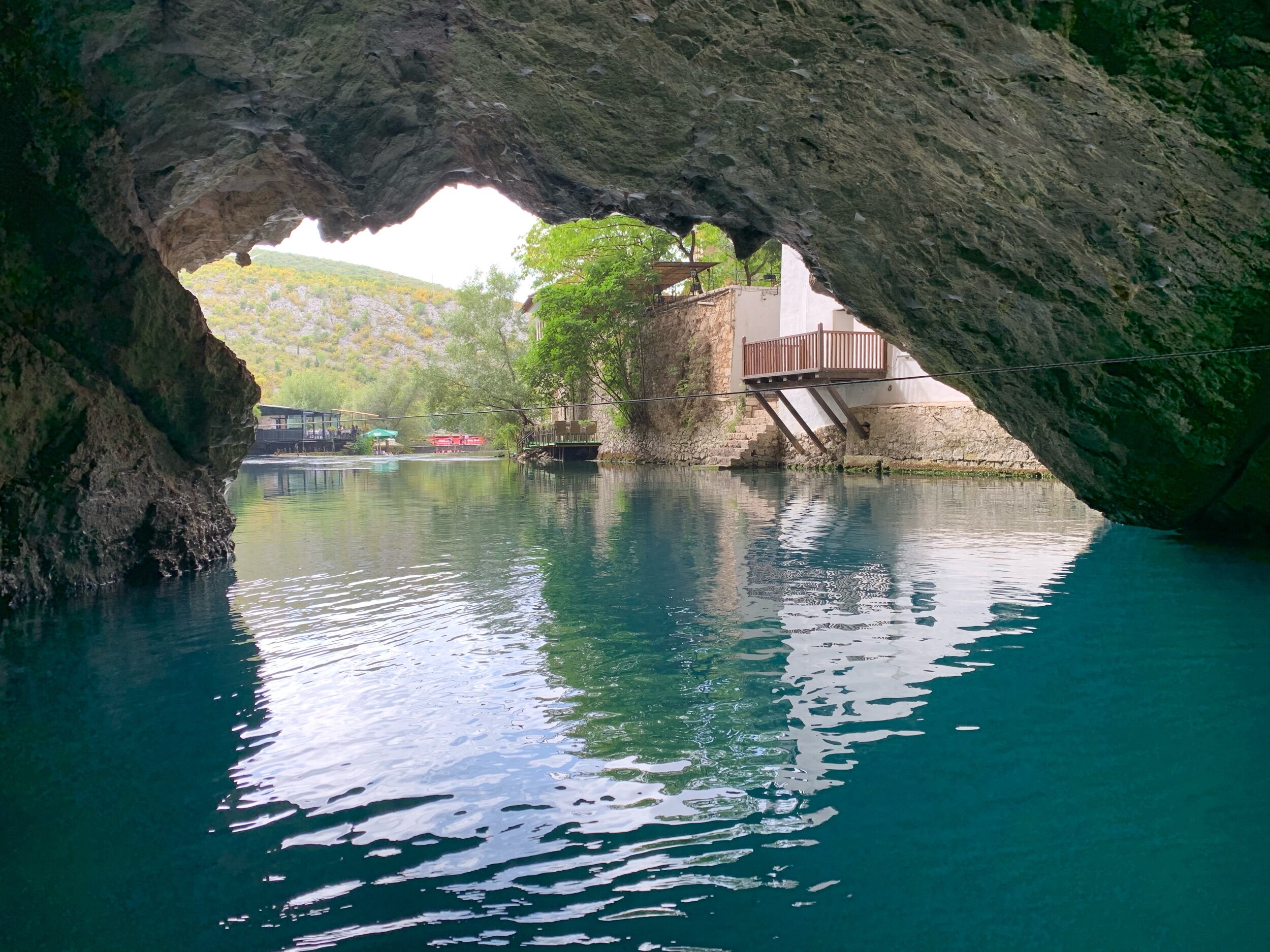







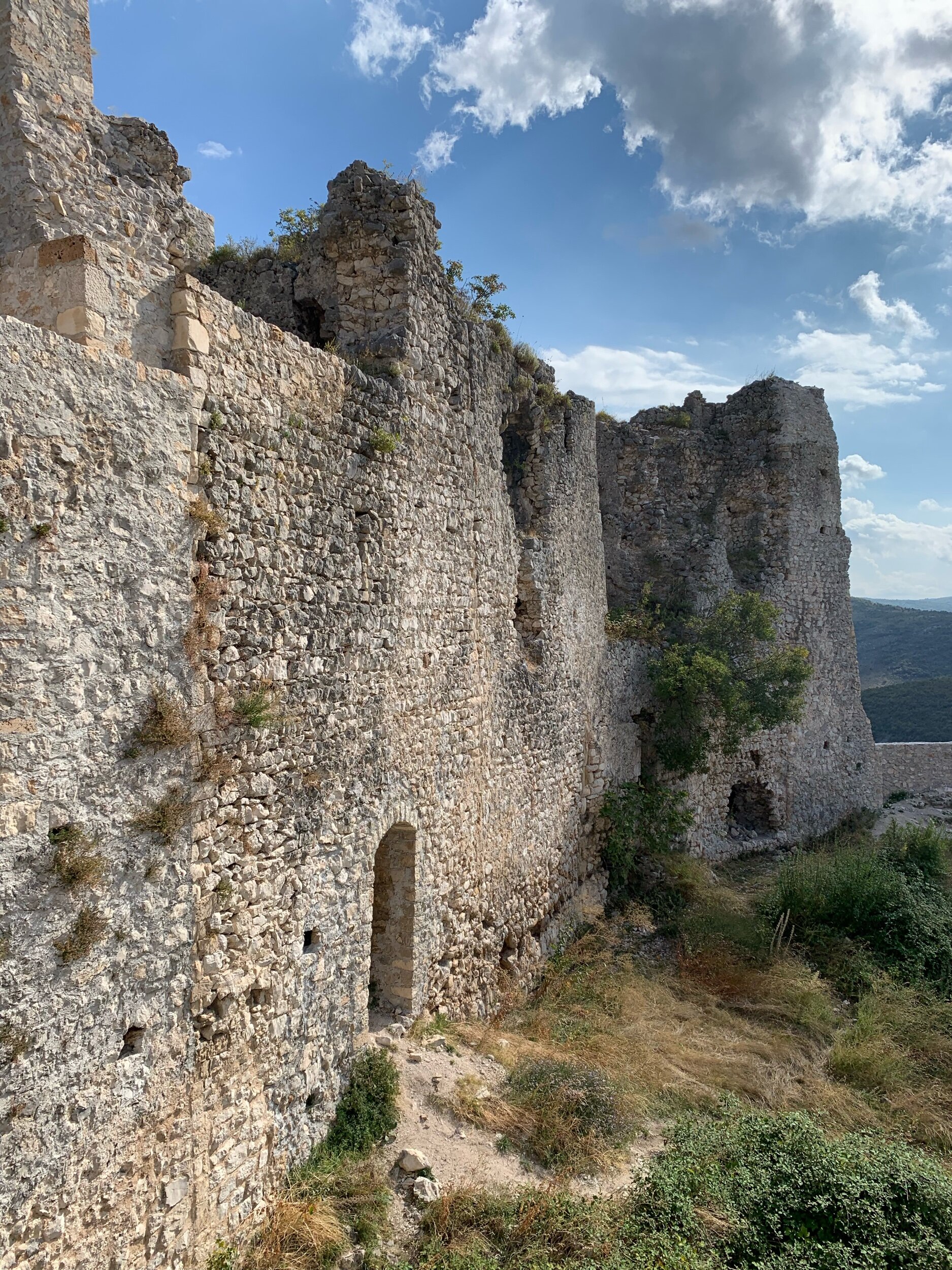




















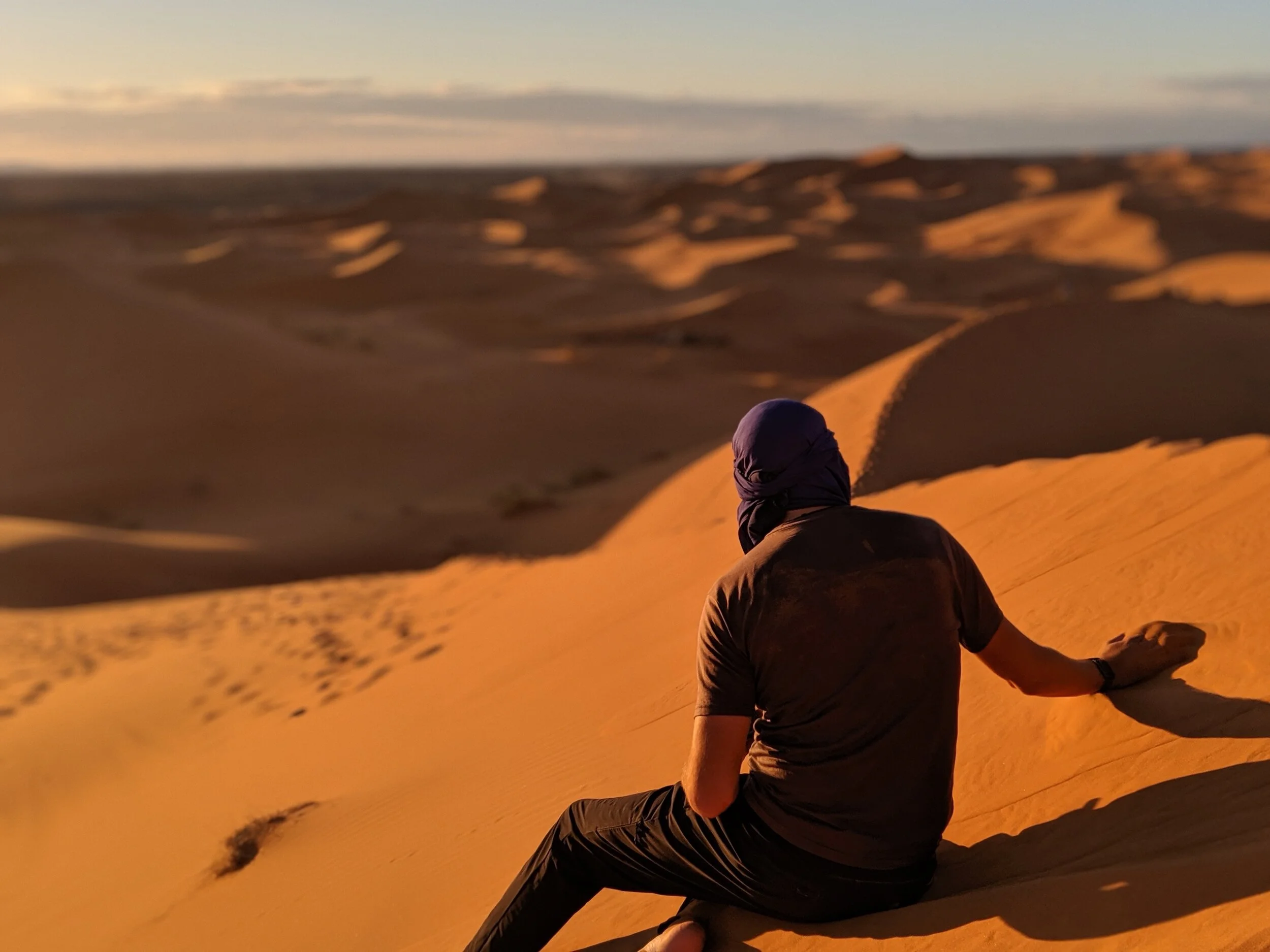

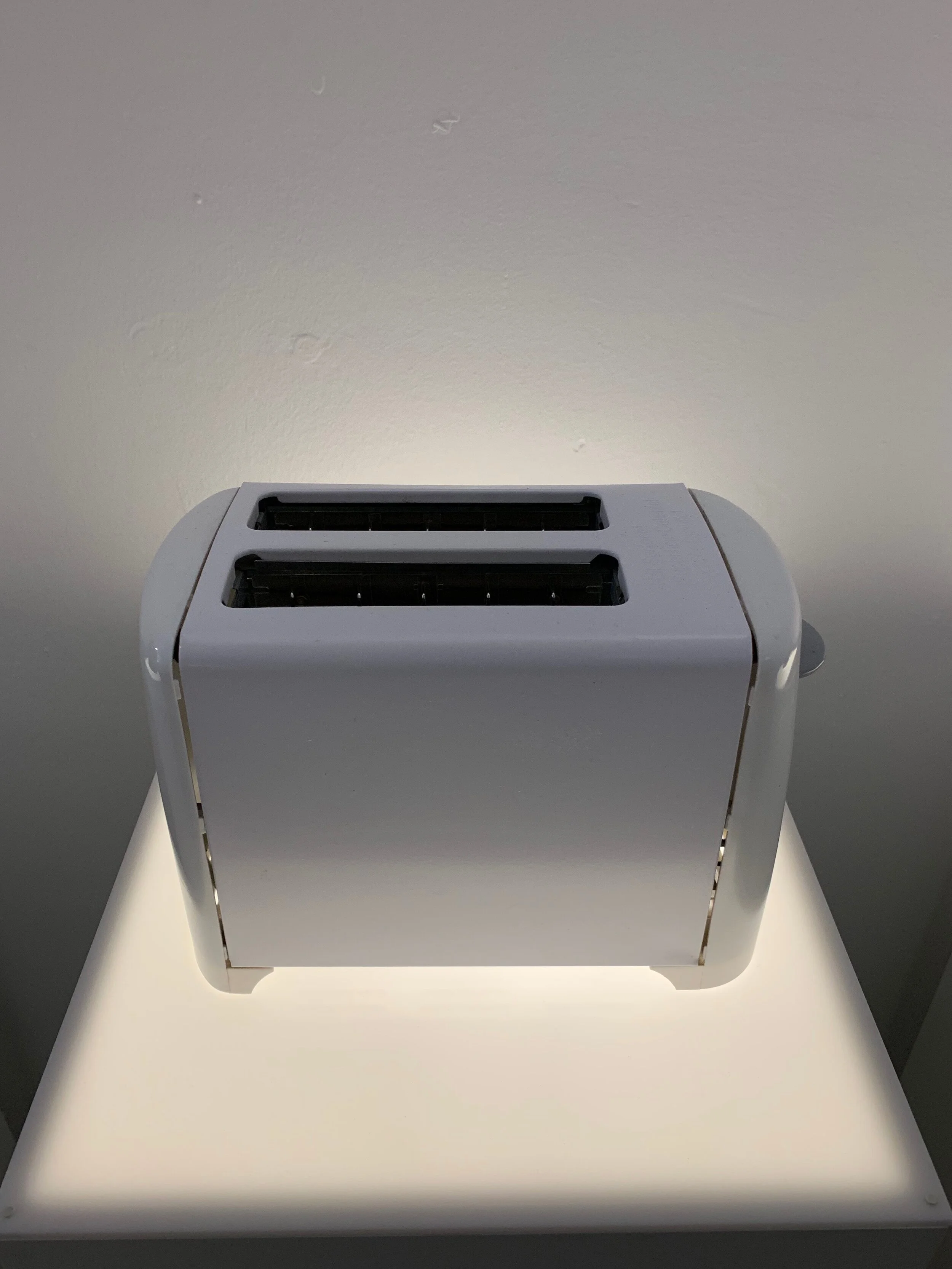

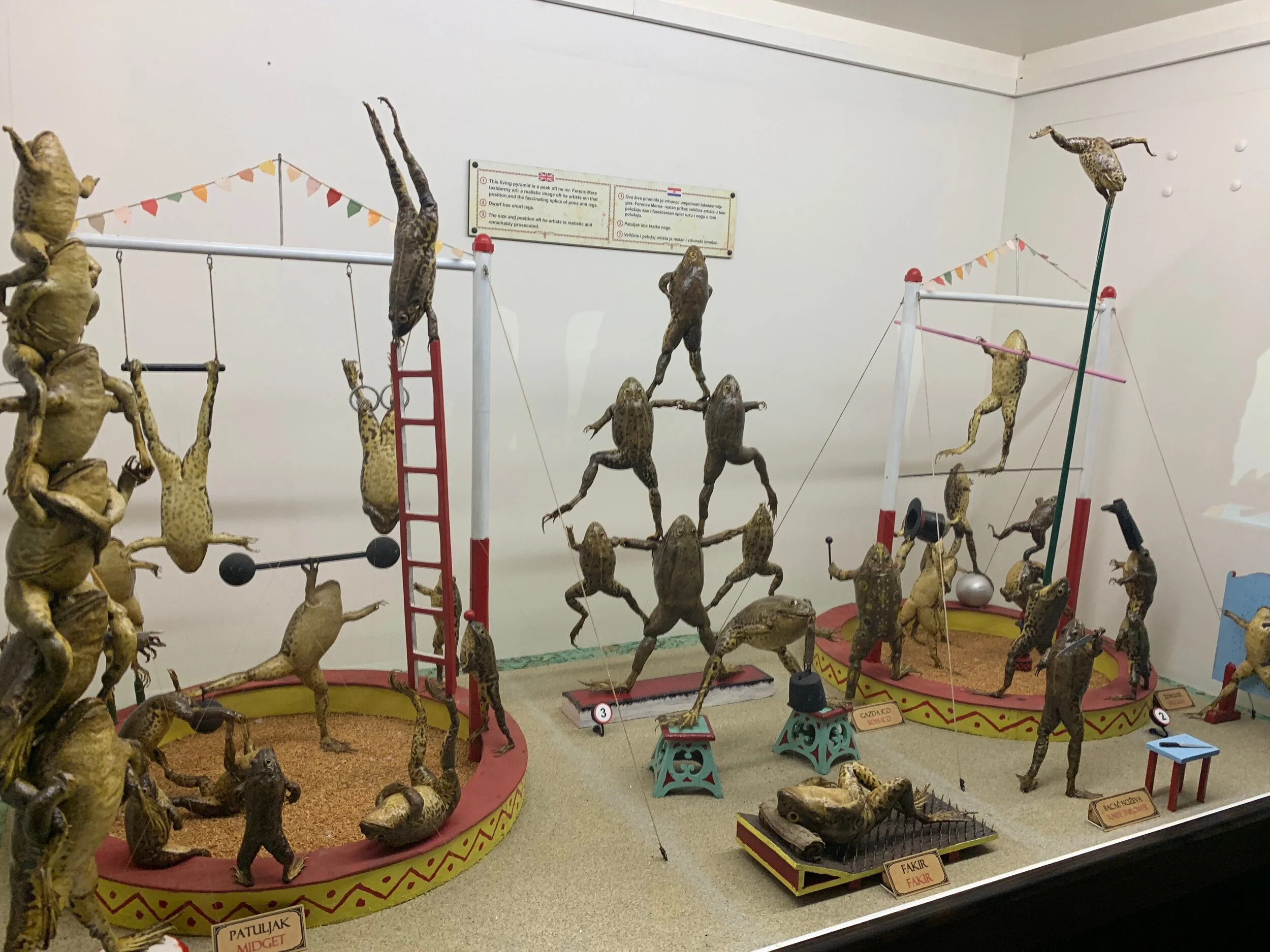
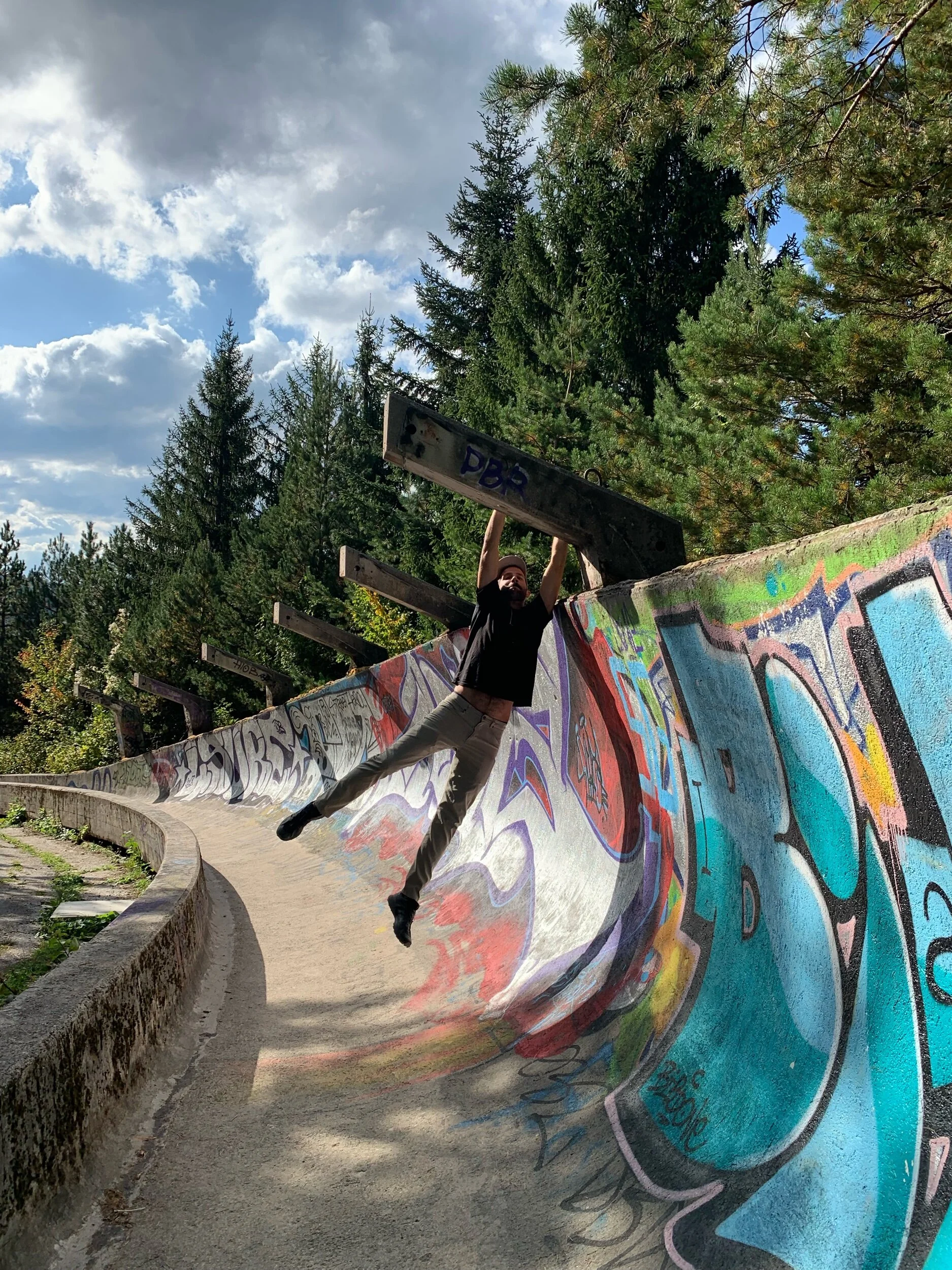
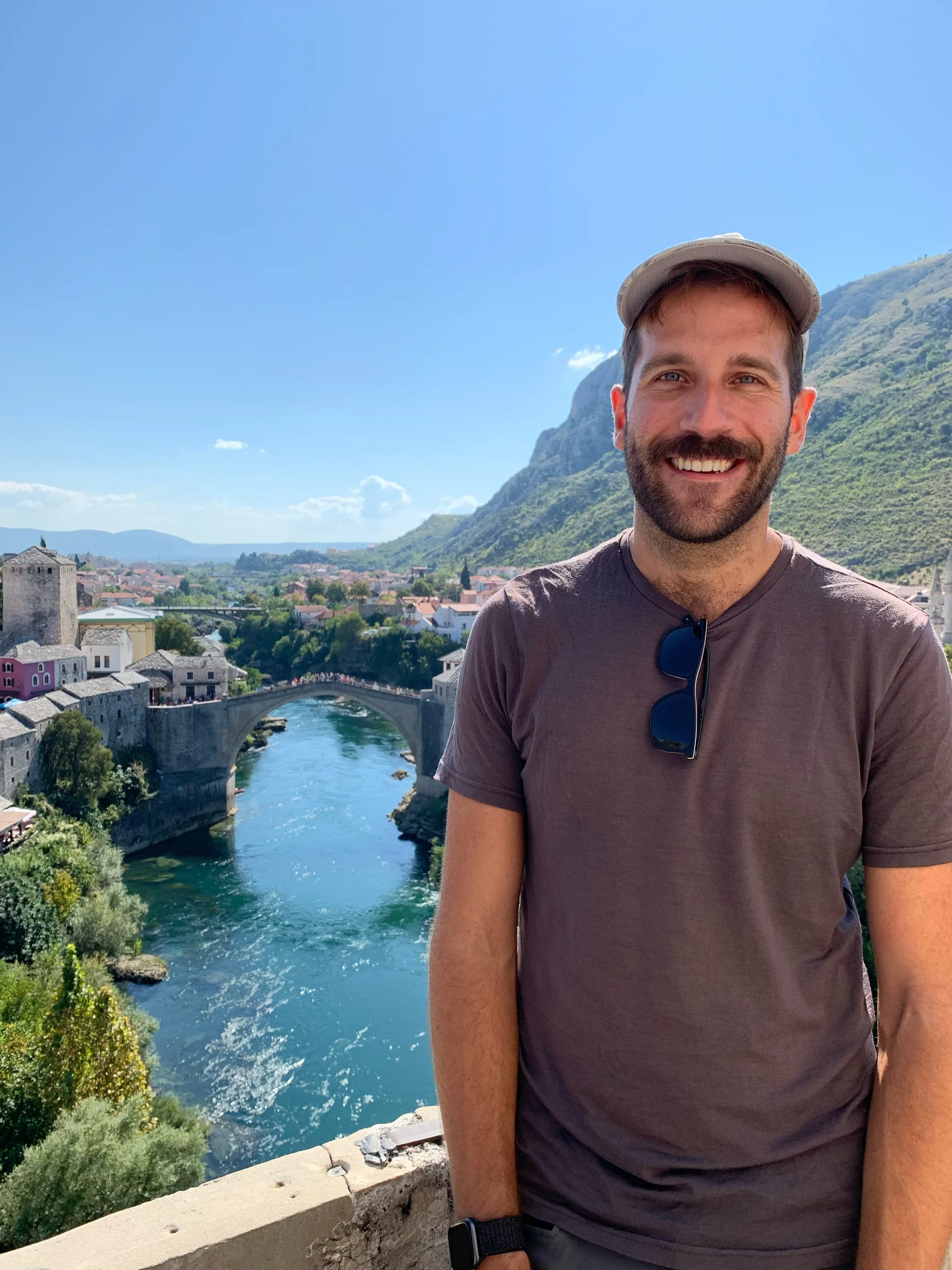
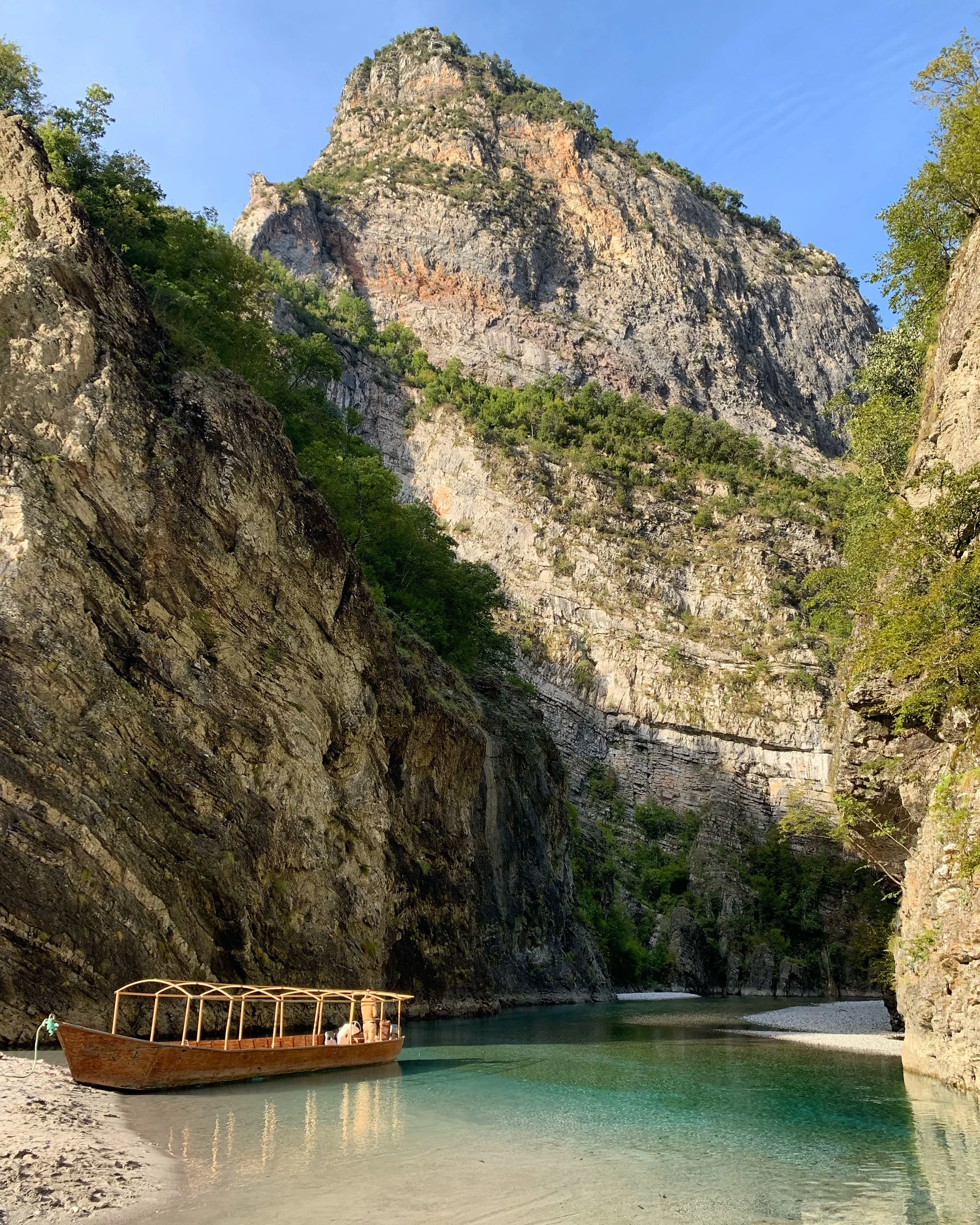
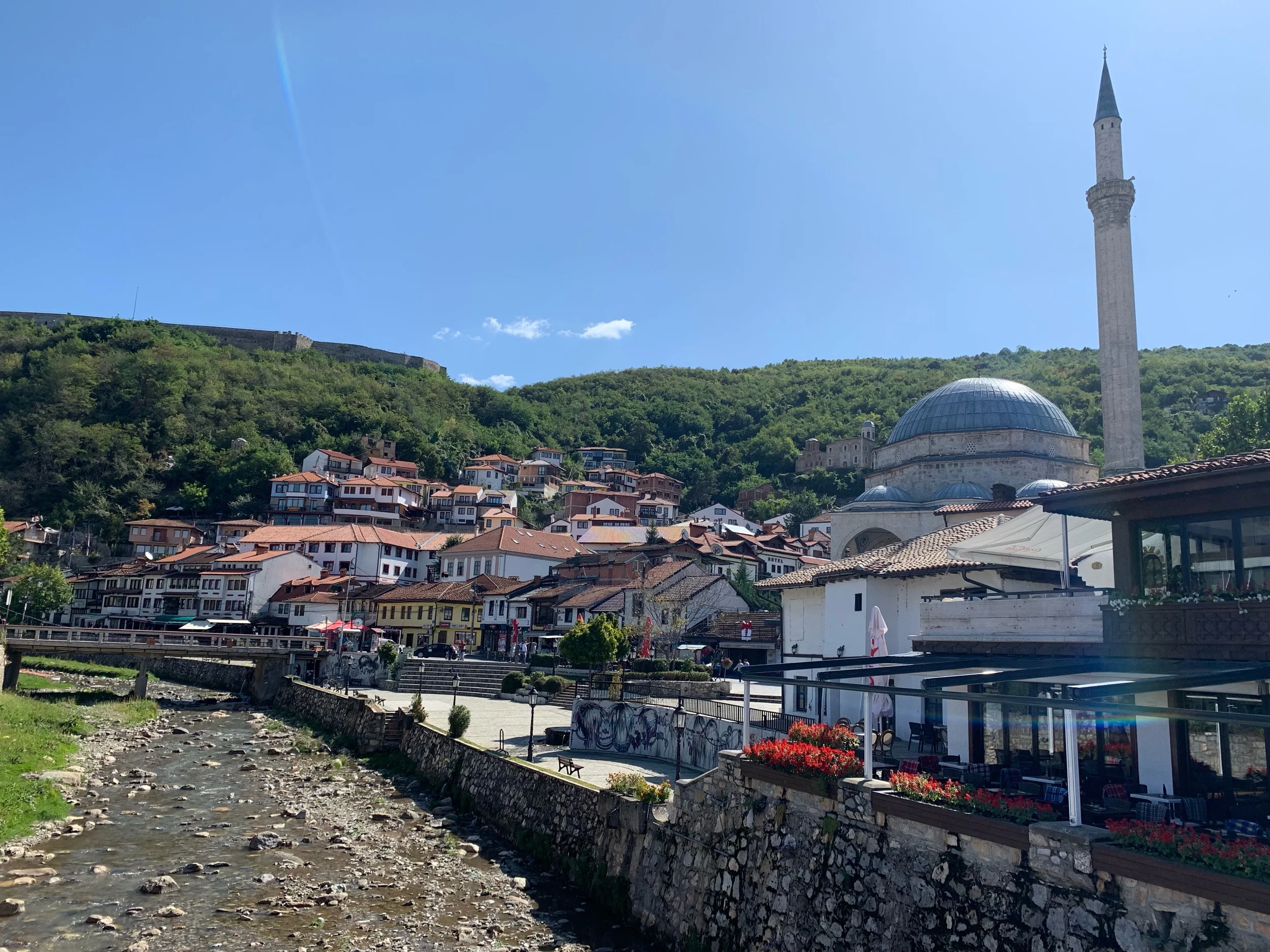
A must for history junkies